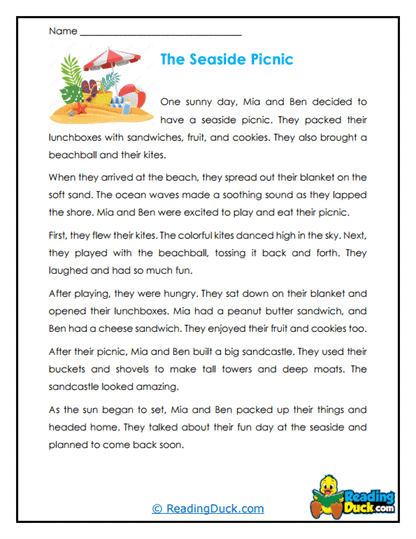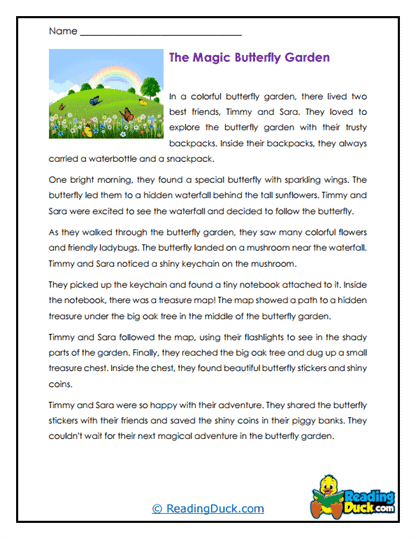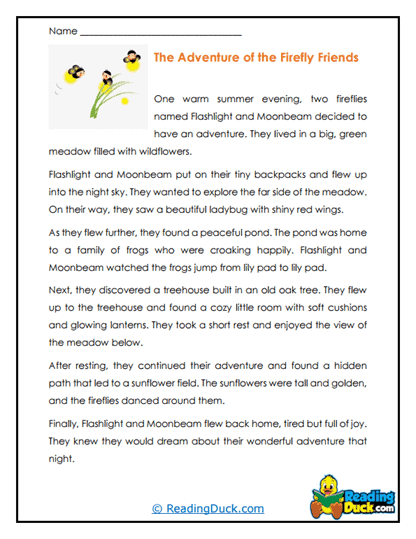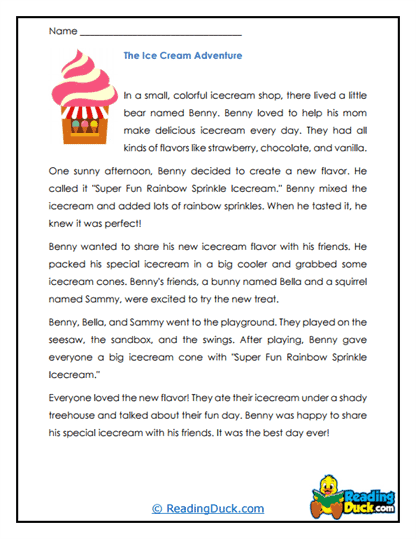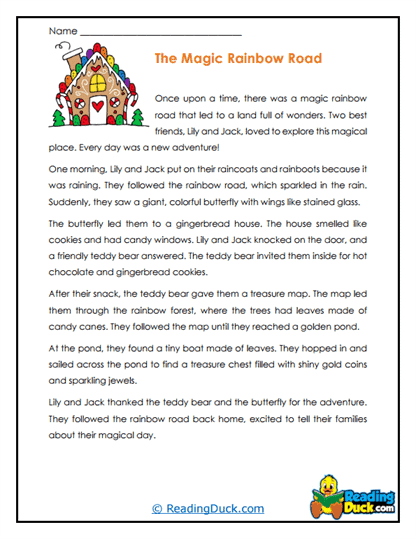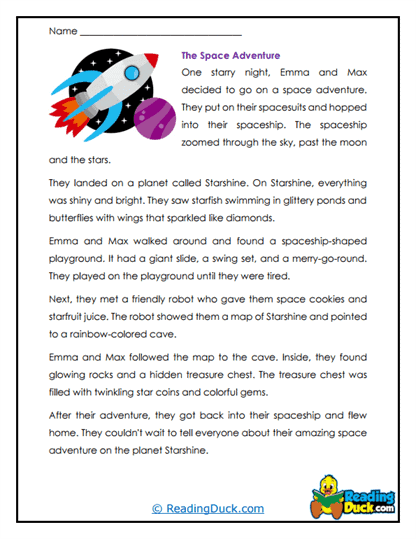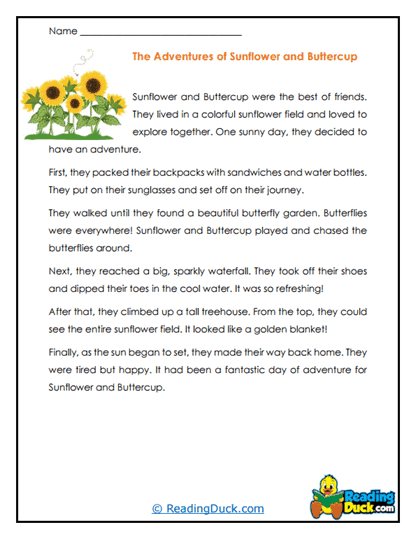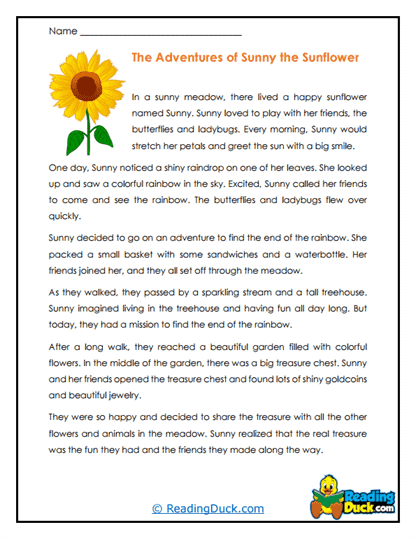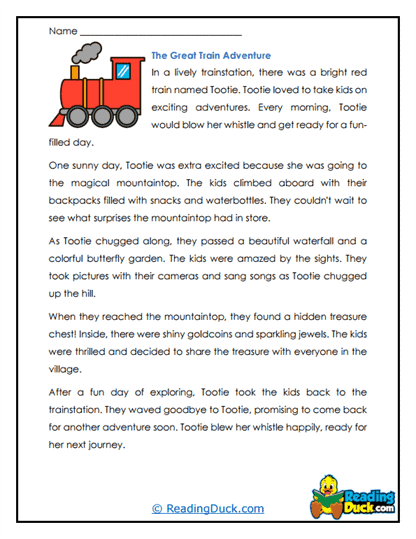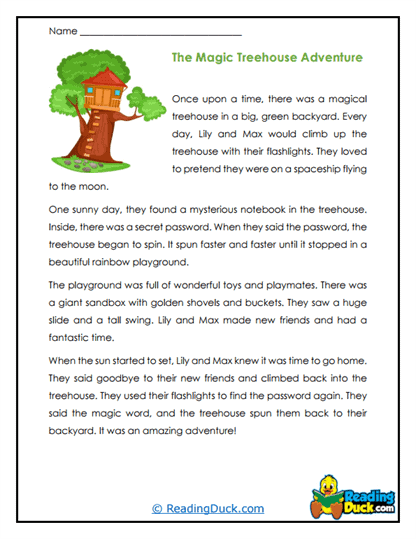Compound Words Reading Passages Worksheets
About Our Compound Words Reading Passage Worksheets
Our Compound Words Reading Passages Worksheets are designed to help students develop essential phonics and reading skills by focusing on the use of compound words. Compound words, formed by combining two or more individual words (e.g., "sunflower," "notebook," "basketball"), play a crucial role in expanding students' vocabulary and improving their decoding abilities. These worksheets offer targeted reading passages that feature compound words in context, allowing students to practice and master this key phonics pattern.
Each worksheet is provided in PDF format, making it easy to view, download, and print for use in the classroom or at home. Additionally, each worksheet includes a downloadable answer key to assist both educators and parents in assessing students' progress quickly and efficiently. This format ensures that the worksheets are a practical and flexible resource that can be easily integrated into any reading or phonics program.
Key Benefits of Compound Words Reading Passages
The Compound Words Reading Passages Worksheets offer several distinct benefits for students as they work to improve their phonics skills and reading fluency. By focusing on compound words, these worksheets help learners understand how individual words can be combined to form new words with different meanings. Here are some of the key benefits:
- Targeted Phonics Practice: The worksheets focus specifically on compound words, such as "backyard," "cupcake," and "raincoat," providing repeated exposure to these important word structures.
- Improved Word Recognition: As students encounter compound words in context, they become more familiar with the process of recognizing and understanding how two smaller words can create a new word, strengthening overall vocabulary and word recognition skills.
- Enhanced Decoding Abilities: Practicing compound words helps students break down larger words into their component parts, making it easier to decode unfamiliar words and understand their meaning.
- Vocabulary Expansion: By learning compound words, students can significantly expand their vocabulary, giving them access to a wider range of language and expression in both their reading and writing.
- Fluency Development: The targeted practice with compound words within meaningful passages promotes reading fluency, helping students increase both speed and accuracy as they read more complex texts.
How to Use the Worksheets in the Classroom
Educators can integrate the Compound Words Reading Passages Worksheets into their daily phonics instruction, small-group activities, or individual practice. Below are several strategies for effectively using these worksheets in the classroom:
- Group Reading Sessions: Use the passages in a group setting, where students take turns reading aloud. This helps students practice pronouncing compound words correctly while fostering collaborative learning.
- Lesson Warm-Ups: Start the day’s phonics lesson with a short passage featuring compound words. This serves as a warm-up activity that gets students focused on the specific phonics pattern for the day.
- Independent Practice: Assign the worksheets during independent reading time to give students the opportunity to practice compound words on their own, reinforcing their learning through self-guided work.
- Phonics Centers: Incorporate these worksheets into a phonics or literacy center, where students can engage in focused practice with compound words in small groups or individually.
- Assessment Tools: Use the answer keys to assess student understanding of compound words and track their progress over time. This allows educators to provide targeted feedback and adjust instruction as needed.
These strategies make the worksheets a versatile tool for classroom use, helping to enhance students’ phonics instruction and improve their reading fluency.
Supporting Reading Development at Home
The Compound Words Reading Passages Worksheets can also be an excellent resource for parents and caregivers to support their child’s reading development at home. Whether used for nightly reading practice or as a supplement to classroom instruction, these worksheets provide valuable phonics practice that aligns with the reading curriculum. Here are several ways parents can use the worksheets to support learning:
- Daily Reading Practice: Assign a reading passage each night for your child to read aloud, focusing on identifying and pronouncing compound words correctly. This regular practice reinforces classroom instruction and helps build fluency.
- Shared Reading Sessions: Take turns reading the passages with your child, allowing them to hear compound words read aloud and practice them in context. This shared experience promotes fluency and builds confidence in reading.
- Homework Support: Use the worksheets as part of your child’s homework routine to reinforce what they’ve learned at school. Review the answers together using the downloadable answer key, and provide immediate feedback to help them improve.
- Fluency Building: Encourage your child to read the same passage multiple times to improve their speed and accuracy. Repeated exposure to compound words helps them become more automatic in recognizing and decoding these words.
- Tracking Progress: Monitor your child’s progress as they complete the worksheets, noting improvements in their ability to recognize and read compound words. Celebrate milestones and achievements to keep them motivated and engaged in their reading practice.
By incorporating these worksheets into daily home routines, parents can play an active role in supporting their child’s literacy development, helping to build strong phonics skills and reading fluency.
Understanding Compound Words and Their Importance
Compound words are an essential part of the English language, and learning to recognize and decode them is a critical step in students’ phonics development. Compound words are formed when two or more words are combined to create a new word with its own meaning. For example:
- Examples of Compound Words:
- "Sunflower" (sun + flower)
- "Football" (foot + ball)
- "Bedroom" (bed + room)
- "Notebook" (note + book)
By learning how compound words are formed, students can expand their vocabulary, improve their decoding abilities, and enhance their understanding of word meanings. The Compound Words Reading Passages Worksheets provide students with repeated exposure to compound words in context, helping them master this important phonics concept.
Building Fluency Through Compound Words Practice
Reading fluency is a critical skill for young learners, and regular practice with compound words can significantly contribute to the development of this skill. Fluency involves reading text smoothly, quickly, and accurately, with a focus on comprehension. The Compound Words Reading Passages Worksheets promote fluency by giving students the opportunity to practice compound words within meaningful passages. Here’s how these worksheets support fluency development:
- Accuracy in Reading: By reading passages that feature compound words, students become more familiar with these word structures and can decode them more accurately.
- Increased Reading Speed: Fluency involves both speed and accuracy. Repeated practice with compound words in connected text helps students build their reading speed over time.
- Improved Comprehension: Fluent readers can focus more on understanding the text, rather than getting stuck on decoding individual words. Practicing compound words in meaningful passages helps students comprehend the overall meaning of the text while improving their fluency.
By regularly practicing with these worksheets, students can make steady progress toward becoming more fluent and confident readers.
Practical Tips for Maximizing the Effectiveness of the Worksheets
To help students get the most out of the Compound Words Reading Passages Worksheets, educators and parents can follow these practical tips:
- Set Specific Learning Goals: Establish a clear goal for each worksheet, such as improving compound word recognition or increasing reading fluency.
- Encourage Repeated Practice: Repetition is key to mastering compound words. Have students read the passages multiple times to build both confidence and fluency.
- Incorporate into Homework Assignments: Assign the worksheets as part of your students' homework to ensure they continue practicing their phonics skills outside of class.
- Use in Phonics Centers: Set up a literacy center where students can work independently or in pairs to practice reading compound words in context.
- Monitor and Celebrate Progress: Use the answer keys to track student progress, and celebrate improvements in their phonics and fluency skills to keep them motivated.
By following these tips, educators and parents can ensure that students make the most of their practice with compound words, leading to more effective phonics instruction and stronger reading skills.
Conclusion
The Compound Words Reading Passages Worksheets are an invaluable resource for students, educators, and parents alike. By focusing on compound words, these worksheets provide targeted phonics practice that helps students improve their decoding skills, vocabulary, and reading fluency. Available in easy-to-use PDF format with downloadable answer keys, these worksheets are ideal for both classroom use and home practice.
With consistent practice, students will become more confident readers, mastering compound words and applying their knowledge in real reading situations. These worksheets are an essential tool for building foundational literacy skills and setting students on the path to reading success.
